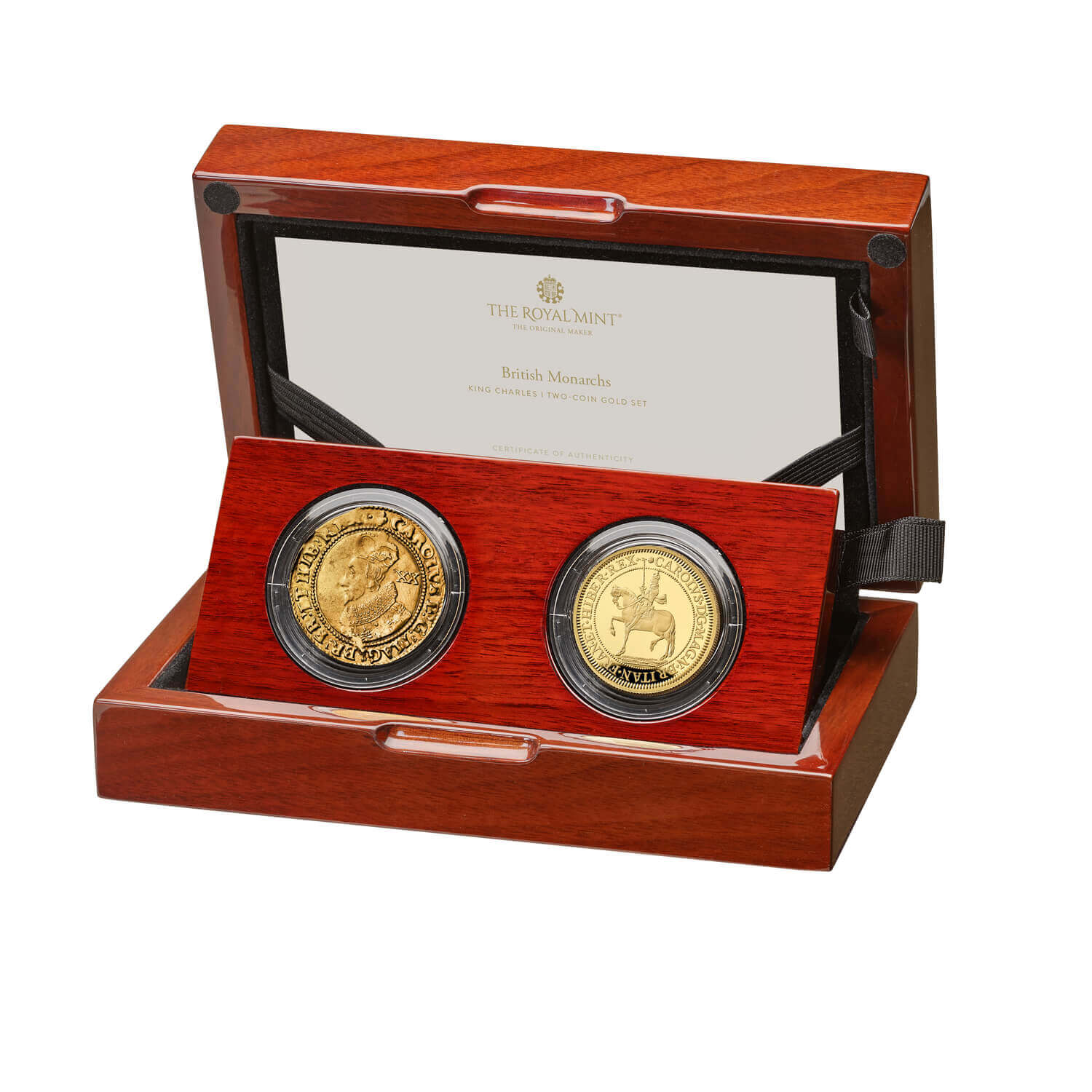Charles I Coins are the latest release in 2023 from The Royal Mint in the British Monarchs Collection of UK Coins. In BU, Silver and Gold.
#ad Available to purchase from The Royal Mint Website at NOON on the 13th March 2023.
Charles I Coins For Sale
Choose from the list of gold and silver proof coins. Some as low mintage and sell out fast.
#affiliate – check The Royal Mint website for current prices and availability. Prices are “Issue Prices” and are subject to change at any time due to the fluctuations in precious metal prices (gold and silver).
Who designed the Charles I Coins?
Details on the design of these beautiful coins.

This Charles I portrait is an original design by Nicholas Briot and has been beautifully remastered to show the coin as it would have appeared almost 400 years ago.
Briot lived between 1579 – 1646 as a medalist, coin-engraver and printmaker. Elder brother of Isaac Briot. Chief-Engraver at the Paris Mint, 1606-25; to England in 1625 where was named Chief-Engraver at the Royal Mint, London, 1633; Mint-master in Scotland, 1635-39; Engraver of the coins of Lorraine, 1611024. Died in Oxford in 1646.

British Monarchs Collection
The sixth coin released as part of the British Monarchs Collection from The Royal Mint UK Coins features the portrait of the second king from the House of Stuart, Charles I.
This five-year collection features several legendary monarchs from four separate Royal Houses. The latest coin features the second monarch from the House of Stuart, Charles I.
The British Monarchs Releases and Dates
This is the sixth coin in a five-year collection.
The British Monarchs Release Dates
| Monarch | House | Launch Date |
| King Henry VII | Tudor | January 2022 |
| King James I | Stuart | March 2022 |
| King George I | Hanoverian | June 2022 |
| King Edward VII | Saxe-Coburg-Gotha | September 2022 |
| King Henry VIII | Tudor | January 2023 |
| King Charles I | Stuart | March 2023 |
| King Charles II | Stuart | June 2023 |
| King George II | Hanoverian | September 2023 |
| King Edward VI | Tudor | January 2024 |
| King James II | Stuart | March 2024 |
| King George III | Hanoverian | June 2024 |
| King George IV | Hanoverian | August 2024 |
| King George V | Saxe-Coburg-Gotha/Windsor | October 2024 |
| Queen Mary I | Tudor | January 2025 |
| King William III and Queen Mary II | Stuart | March 2025 |
| King William IV | Hanoverian | June 2025 |
| King George VI | Windsor | September 2025 |
| Queen Elizabeth I | Tudor | January 2026 |
| Queen Anne | Stuart | March 2026 |
| Queen Victoria | Hanoverian | June 2026 |
| Queen Elizabeth II | Windsor | September 2026 |
King Charles I
From the House of Stuart, Charles I. Born in 1600, Charles I was the second son of the then James VI, King of Scotland, and was never expected to become heir to the throne.
Charles I is the second monarch from the House of Stuart. The second son of James I, Charles I was a staunch believer in the divine right of kings.
Charles was a sickly child, and initially remained in Scotland when his father became James I, King of England, as his family felt that the journey would prove too stressful for him.
When his health improved and he was able to overcome his physical challenges, Charles joined his family in England.
The House Stuart
Charles I is the second king from the House of Stuart. This monarch’s reign saw various changes in British coinage, including the decrease in gold coinage output, with the angel becoming the sole fine gold coin in circulation by the end of his reign. Additionally, silver coinage output increased, and the silver half-crown became more popular than the gold halfcrown.
During Charles I’s reign, the Tower of London ceased to strike dates on sixpences, and the introduction of Nicholas Briot to The Royal Mint in 1628 led to coins that were considered neater and better executed than those of his predecessor.
The Civil War that ensued had a serious impact on coin production, with Charles I establishing mints in Aberystwyth, Shrewsbury, Oxford, Bristol, Truro, Exeter, York, and Chester after leaving London within the first few months of the conflict.
Charles I’s belief in the divine right of kings and his repeated dissolution of parliament led to tensions between him and the ruling body, culminating in his imprisonment and eventual execution.
It was only eleven years after his death that his son, Charles II, was invited back from exile to take up his father’s mantle as king. Overall, Charles I’s reign saw changes and challenges in British coinage and the country’s political landscape.










